Just how high can Asia-U.S. West Coast spot rates go? They blew past $3,000 per forty-foot equivalent unit (FEU) in early August and have been climbing ever since. They’ve just topped $3,700. Can they reach $4,000?
No one predicted that the container industry would be doing this well, this quickly.
“We’ve been scratching our heads a lot, trying to figure out why ocean freight prices have climbed so high,” commented Eytan Buchman, chief marketing officer of Freightos, on Wednesday.
The bullish view is that import demand will continue to surprise to the upside. Ocean rates evidence a U.S. economic rebound. COVID erased demand for some products and services, but increased demand for other products. Storefront sales won’t recover, but e-commerce sales will offset storefront losses. Government support will counter shutdown fallout.
The bearish view is that the economic-fallout shoe has yet to drop. Demand for ocean container transport is being temporarily juiced by the tail end of waning government support, a switch to higher inventory levels — for both defensive and e-commerce reasons — and by bookings brought forward ahead of Chinese Golden Week (Oct. 1-7).
Another dip ahead?
Panjiva, a unit of S&P Global Market Intelligence, reported Wednesday that U.S. seaborne box imports hit an all-time monthly high in August.
The total came in at 2.71 million twenty-foot equivalent units (TEUs), up 5.9% year-on-year driven by a 14.3% surge from China.
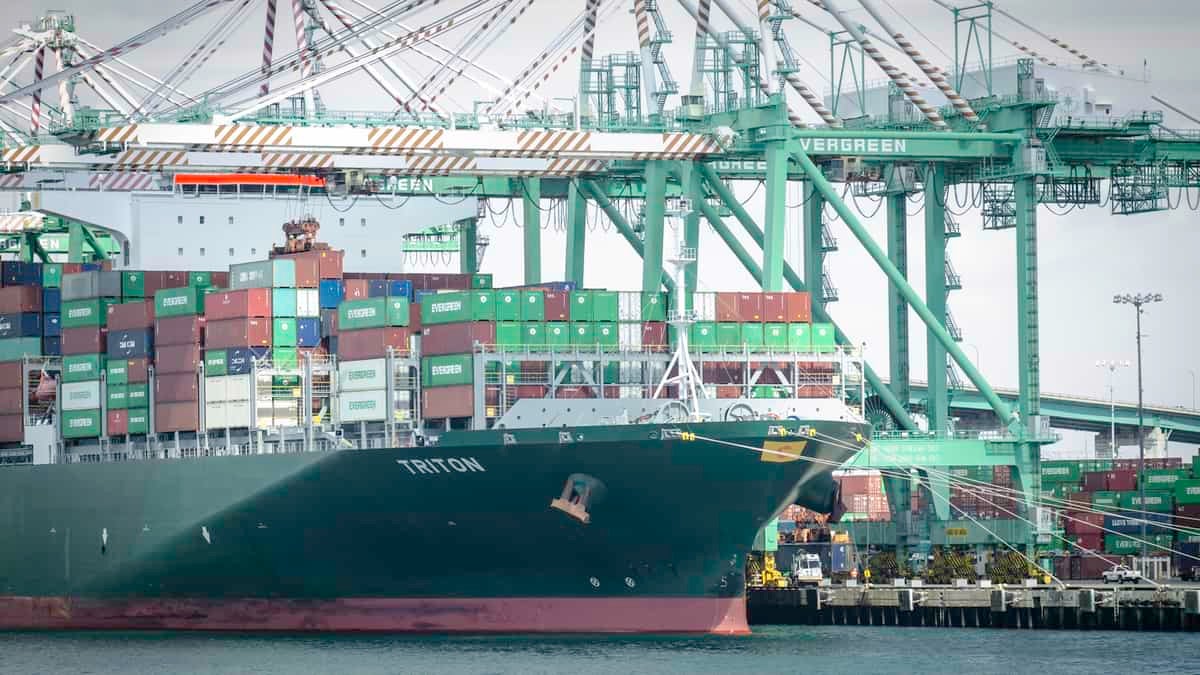
“I find it difficult to see this situation as a permanent stable reversal given the underlying economic issues from the pandemic,” opined Lars Jensen, CEO of SeaIntelligence Consulting. He foresees “another dip for container-shipping volumes” before “getting back on a more permanent upturn.”
According to Buchman, “Demand for ocean freight out of China is still outpacing supply [although] some of the current demand can be attributed to pre-loading ahead of the [Golden Week] break.
“The surge in volumes is leading to equipment shortages in Asia.” he continued. “Some shippers are paying premiums on top of spiking rates to guarantee containers and space. The imbalance is also putting pressure on overwhelmed U.S. ports and importers to process and return empty containers quickly.”
FreightWaves Maritime Expert Henry Byers believes volumes have peaked. “From here, volume will remain on a relatively stable decline through the end of year,” he predicted.
Asia-US rates still soaring
The Shanghai Containerized Freight Index (SCFI) put Asia-West Coast spot rates at $3,758 per FEU for the week ending last Friday. The SCFI estimate for Asia-East Coast spot rate was $4,538 per FEU.
The Freightos Baltic Daily Index shows the same trend but slightly lower numbers. It has Asia-West Coast rates (SONAR: FBXD.CNAW) at $3,727 per FEU as of Tuesday and Asia-East Coast rates (SONAR: FBXD.CNAE) at $4,491 per FEU.
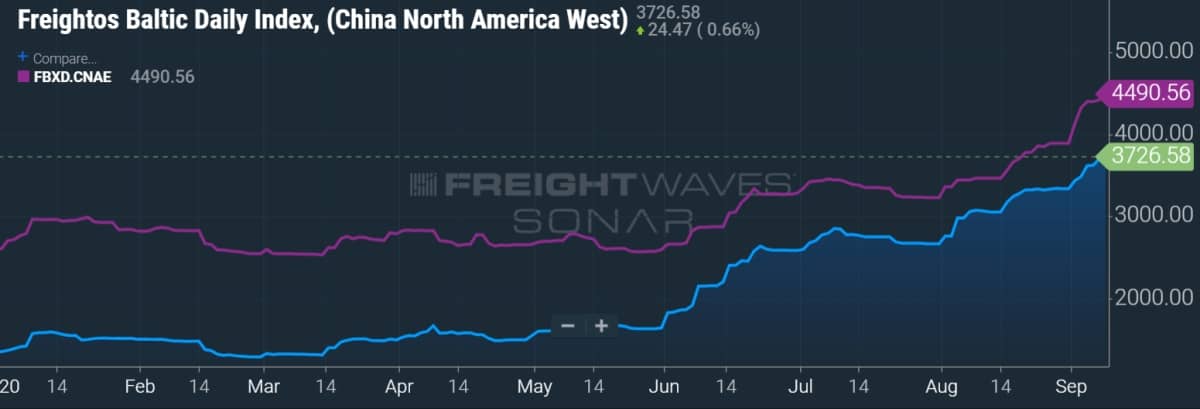
Trans-Pacific earnings ‘remarkable’
According to Alphaliner, “The recent surge in spot rates from Shanghai to California … has made this route the most lucrative for carriers for exports out of China.”
Alphaliner combined the SCFI numbers with a distance calculator to determine earnings per nautical mile for each route out of China. Shanghai-California came in at 65 cents per nautical mile, Shanghai-New York 43 cents and Shanghai-Antwerp just 20 cents.
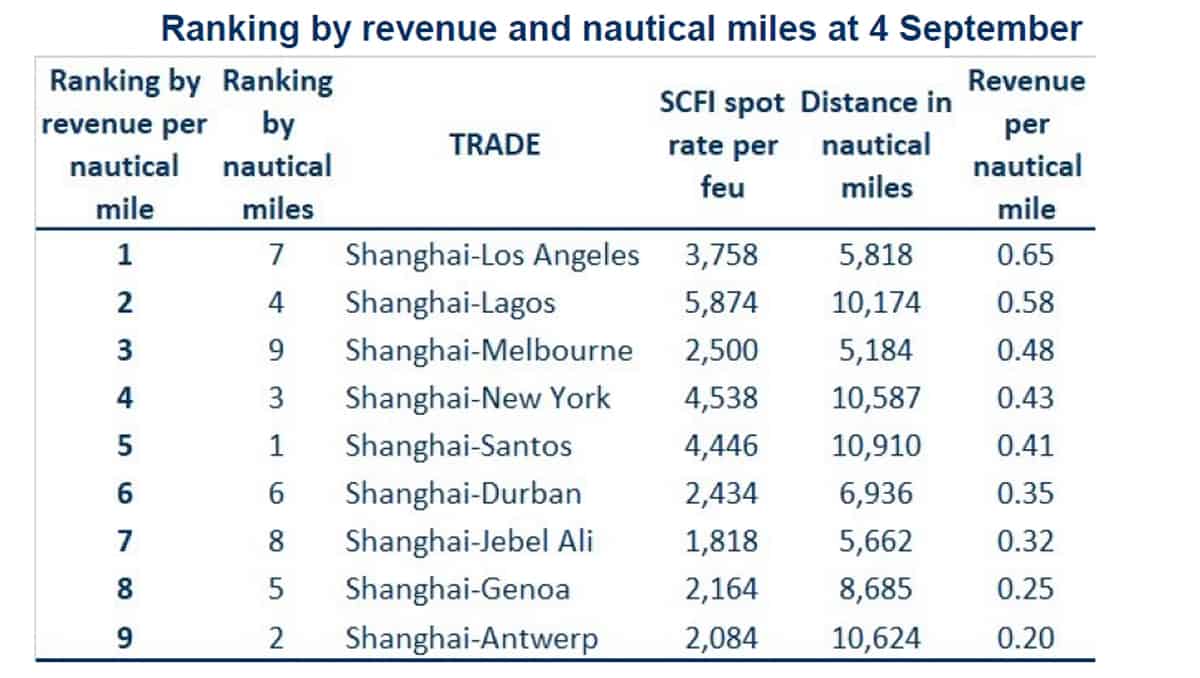
“The fact that earnings per nautical mile are more than three times as high on the Asia-USWC [U.S. West Coast] route [versus Asia-North Europe] is remarkable, as carriers need less resources on a shorter trade,” said Alphaliner.
“A typical Far East-North Europe service requires … 12 ships, whereas six ships are sufficient for a Trans-Pacific Southwest [U.S.] loop,” it noted, attributing the rate disparity to “very strong cargo demand on the trans-Pacific.”
Inactive fleet down, charter rates rebound
When coronavirus pummeled import demand in the second quarter, carriers reduced sailings. Carriers idled ships and let charters expire. They booked new charters at much lower rates. Now, carriers are scrambling to lease in as much as tonnage as they can — and they’re paying up for it.
The inactive fleet peaked at over 12% of the total fleet in late May. According to Alpahliner, it was down to just 3.4% as of Aug. 31.
Simultaneously, “the charter market continues its rapid recovery, with charter rates in many cases back to or higher than their pre-COVID-19 level,” said Alphaliner.
Ships carrying 7,500-11,000 TEUs “remain sold out.” The 5,500-7,499 TEU segment “is now sold out” after a recent fixture. Meanwhile, rates for the 4,000-5,299 TEU segment “have gone into overdrive,” said Alphaliner.
This should be welcome news for U.S.-listed container-ship leasing companies such as Costamare (NYSE: CMRE), Global Ship Lease (NYSE: GSL) and Danaos Corp. (NYSE: DAC), although their shares have yet to bounce.
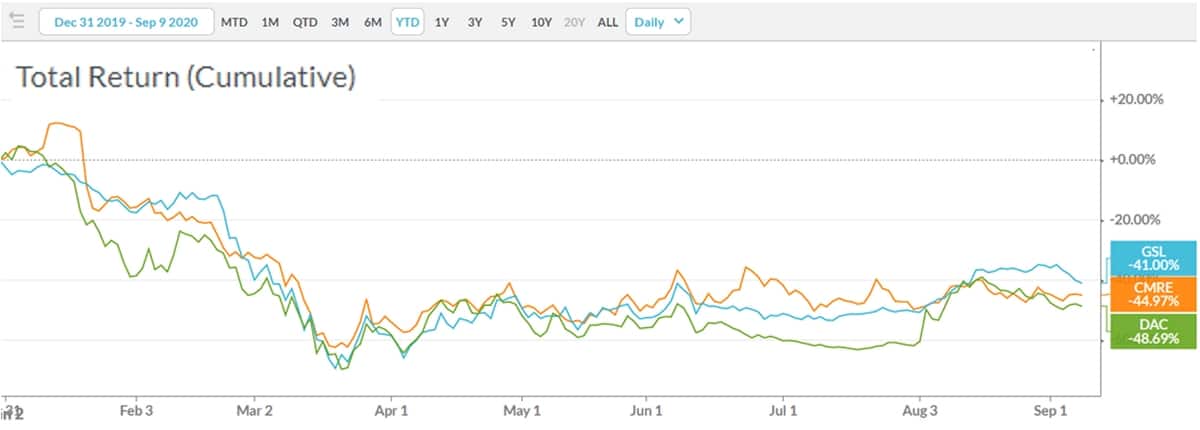
In mid-August, Stifel analyst Ben Nolan called container-ship leasing names the “single most compelling investment opportunity in traditional shipping.”
Asked by FreightWaves on Wednesday whether he still believes so, he replied, “Nothing has changed to dampen my view. The container markets have already moved and some of the [leasing] securities have not.”
Container lines run the table in Q2
With French carrier CMA CGM posting second-quarter results on Friday, all of the top 15 carriers have now reported for the period.
Sea-Intelligence analyzed each liner company’s reported earnings before interest and tax (EBIT) per TEU for the second quarter of 2020 and prior years back to 2010. Hapag-Lloyd led the pack in the latest period, with EBIT/TEU of $146, with Maersk at $129.
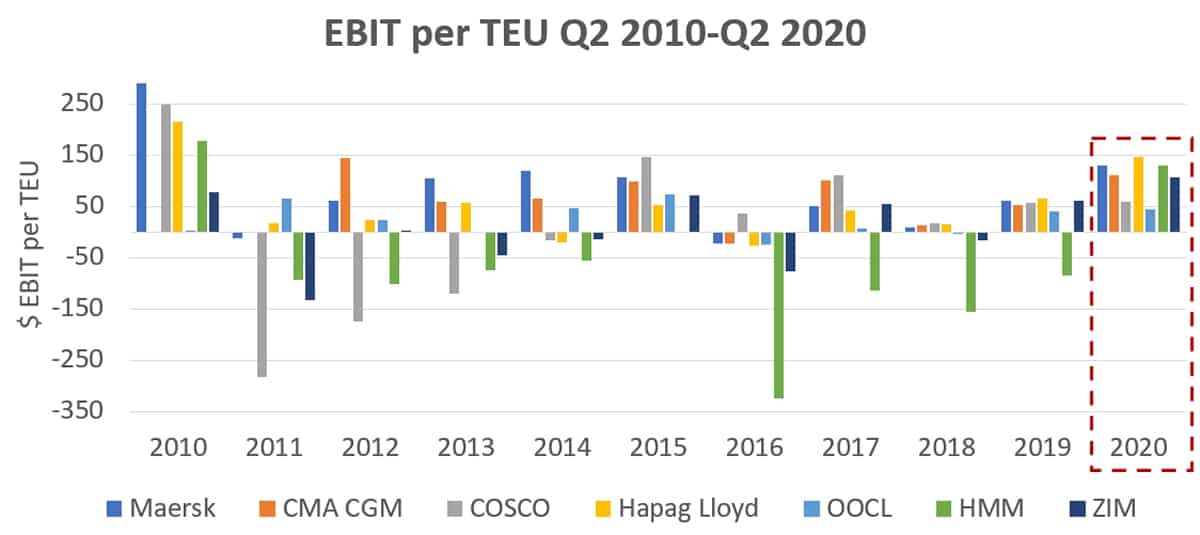
According to Sea-Intelligence CEO Alan Murphy, “A positive EBIT/TEU basically means the shipping line is making an operating profit for every TEU transported.” The second quarter of 2020 was “the first time since 2010 that all reporting carriers have had a positive EBIT/TEU,” he said.
“This is a very positive development for shipping lines,” affirmed Murphy. “The pandemic did not impact container shipping to the extent that was initially feared.” Click for more FreightWaves/American Shipper articles by Greg Miller
MORE ON CONTAINER SHIPPING: What trade war? Imports from China are booming: See story here. Maersk triples quarterly profit despite coronavirus: see story here. Trans-Pacific ‘going crazy’ as demand defies pessimists: see story here.







